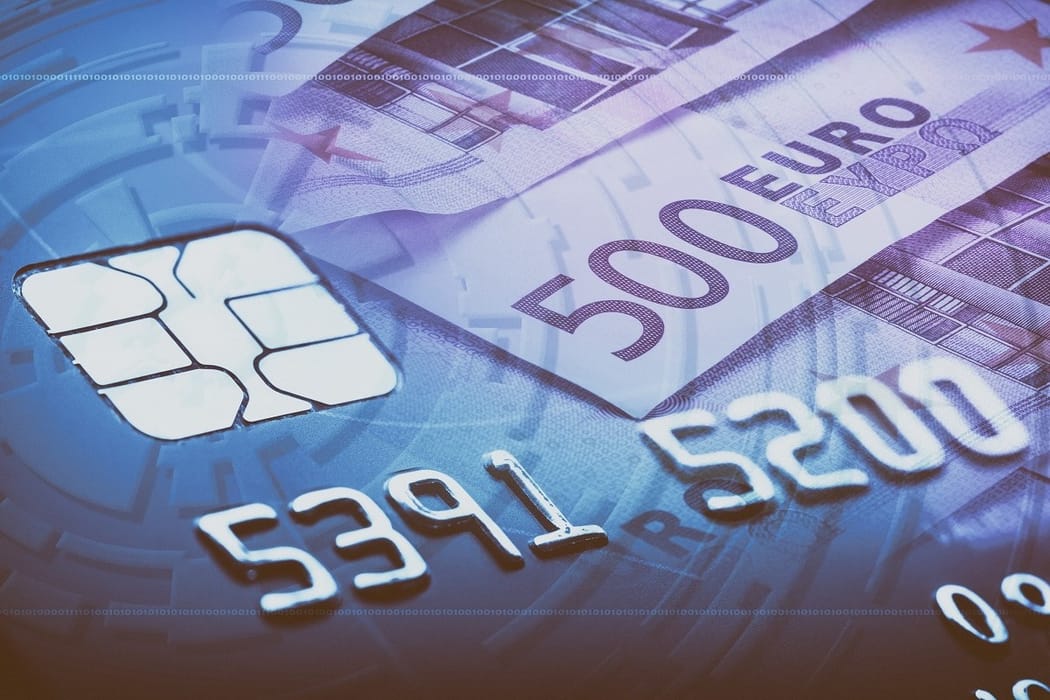The goal of SEPA was to harmonise banking practices all over the EU and EEA, especially costs for bank transactions. One of SEPA's main benefits is that cross-border transactions are also free of charge if domestic transfers cost nothing. So are SEPA transfers free? No, contrary to common knowledge, not all banks offer free SEPA transfers. Some banks may charge you, and some may not. Regardless, it is meant to ease the costs on consumers. However, there are more to it than just transfer fees. Consumers are faced with a number of additional costs if it is not in Euros.
What is a SEPA bank transfer?
SEPA (Single Euro Payments Area) is a pan-European network that lets you send and receive payments in euros (€) between two eurozone bank accounts. Sending money within the eurozone is as simple as making regular domestic bank transfers with SEPA. SEPA aims to make payment solutions and services easier, faster, safer, cheaper, and more integrated for all European Union citizens, businesses, and organisations, using only a single bank account and payment card. SEPA payment services are now provided by about 7000 banks, payment and e-money organisations, and they are used by over 500 million individuals in 34 European countries.
Pros and cons of SEPA Transfers
The SEPA proposal has more advantages than disadvantages. SEPA payments have two main advantages: simplicity and cost-effectiveness. It allows customers to make rapid euro payments anywhere in the SEPA zone using a single payment account. It's open and honest, with no hidden costs. The SEPA payment fee, whatever is charged, is nominal. By allowing access to a larger European market, it aids in the creation of better business opportunities. One significant disadvantage is its limited accessibility, as payments over the network are only available in Europe. Customers, whether they are the sender or the receiver, rely on their banks for real-time payment settlements, which may take longer than the banks anticipate.
Which countries are included in the SEPA?
There are 36 SEPA member states, 27 of which are European Union countries. The European Free Trade Association is represented by four nations (Liechtenstein, Norway, Iceland, and Switzerland). Four of them are microstates with specific monetary agreements with the European Union (Vatican City, San Marino, Monaco, Andorra).
Despite having left the European Union, the United Kingdom is still counted as a member of SEPA.
How does a SEPA bank transfer work?
SEPA bank transfers come in three ways, each with its own set of benefits: the SEPA credit transfer, the SEPA instant credit transfer, and the SEPA direct debit transfer.
- SEPA Credit Transfers require IBAN information from both the sender and recipient's bank accounts to transfer money. After the transfer has been approved, the beneficiary should receive their funds within one business day. On the weekends and public holidays, the transfer is pending
- The SEPA Instant Credit Transfer, also known as SEPA Instant Payment, is primarily about speed. The money can be available in the recipient's bank account in less than 10 seconds after the sender confirms a SEPA Instant Credit Transfer. SEPA Instant Credit Transfers use direct routing from the sender's bank to the recipient's bank, bypassing any middlemen. It is also available 24 hours a day, seven days a week, 365 days a year, unlike conventional banking procedures, which may be delayed on weekends or public holidays. Both the sender's and receiver's banks must be SEPA Instant members in order for it to work. So, before you send a SEPA Instant Credit Transfer request, double-check that both your bank account and the bank account of your friend can handle SEPA Instant Credit Transfers
- For recurring payments, such as rent and bills, SEPA Direct Debit Transfer is commonly utilised. The SEPA Direct Debit Transfer operates by requesting a money transfer from the sender to the recipient of the cash
What are the SEPA transfer limits?
The transfer limits are determined by the type of SEPA transfer you select.
The maximum transfer limit for SEPA Credit Transfers is €999,999,999.99.
You can send up to €100,000 with SEPA Instant Credit Transfers. The transfer limit for SEPA Direct Debit Transfers is not fixed; rather, it is determined by the agreement reached between the recipient and the sender.
Are there any SEPA transfer charges?
Yes, there are. Contrary to what many believe, SEPA transfers are not entirely free. Sure, most banks do not charge for SEPA transfers, but some banks still do. When there are charges, you pay the same price for a SEPA transfer as you would for a domestic wire transfer. Regulation 924/2009 [1] mandates banks to apply the same charges to cross-border euro transactions as they do for domestic transfers. Banks are prohibited from levying different charges based on the recipient bank's location. Therefore, if your bank in France charges you nothing for making transactions within France, then you will also pay nothing for euro transfers to Portugal, for example.
How much do SEPA transfers cost?
Transfers are not the only aspect where you can be charged. There are also costs for currency conversion after the transfer. Several SEPA states have not adopted the euro currency. This includes the United Kingdom, Bulgaria, Denmark, Iceland, Croatia, Norway, Poland, Romania, Sweden, Liechtenstein, the Czech Republic, and Hungary. Therefore, even as members of the EU/EEA, customers in non-euro currency states may end up paying a lot more for cross-border transactions compared to customers in euro-currency states due to SEPA conversion. And it can be very expensive for customers from non-euro member states. For example, customers in Bulgaria (an EU country that does not use the euro) will pay around €20 just to make a transfer of €10 to Finland, for example. Cross-border payments between euro and non-euro countries account for 80 % of all cross-border payments [2] from non-euro area Member States. This is a high number, and high costs are detrimental to the goals of the Single Market because they bar businesses and customers from making cross-border payments, hinder the free movement of capital and prevent financial integration.
Regulation 2019/518 was passed as an amendment to Regulation 924/2009 to reduce further costs for cross-border payments for non-euro member states. Not only does it apply to currency conversion during a bank transfer, but also to card transactions (payments and ATM withdrawals). Currently, customers only know the conversion rate after they have paid for it. They cannot compare the fees they have been charged for currency conversion. Regulation 2019/518 is meant to bring transparency by disclosing the conversion charges to the customers before the transaction.
The disclosure of conversion costs is meant to be harmonised under the process called "Dynamic Currency Conversion" [3]. The currency conversion charges must be disclosed as a percentage mark-up over the ECB's latest available euro foreign exchange reference rates. All the charges are to be expressed in real-time in the same manner, e.g., as stated in the Terms & Conditions of the cards, through SMS, email, or bank app notification. While this process provides transparency to customers, the service is quite expensive because a fee, usually 1% of the amount, is added to the transaction by the processor. One study found that charges can range from 2.6% to 12% for customers [4].
Although Regulation 2019/518 was implemented in 2020, the European Commission requested the National Competent Authorities to enforce the amendment flexibly due to the pandemic. Their enforcement should consider the payment service provider's ability to implement the amendment without being a detriment to the consumer in order to preserve the "stability and continuity of online banking" [5] in the current situation. However, the National Competent Authorities have the discretion to accept the European Commission's appeal.
Summary
SEPA is an all around European banking network that allows eurozone bank accounts to send and receive payments in euros. SEPA's purpose was to harmonise banking procedures across the EU and EEA, particularly in terms of transaction costs. Therefore, the question is are SEPA payments free? One of the key advantages of SEPA is that cross-border transactions are free if domestic transfers are free (for example free SEPA transfers UK banks). One key downside is the lack of accessibility and dependence on the timing of bank clearances. SEPA consists of 36 member states: 27 from the EU, 4 from the European Free Trade Association, and 4 microstates. The SEPA credit transfer, the SEPA instant credit transfer, and the SEPA direct debit transfer are all SEPA bank transfers, each with its own set of advantages. Although SEPA transfers are generally free, some institutions may levy a fee. However, the majority of the costs are incurred by currency conversion from non-euro European countries, which can be rather costly. Regulators are working hard to reduce conversion cost through further standardisation.
The question therefore remains, is SEPA free? The answer varies. Questions like "is SEPA transfer free?" may invoke a lot of nuances in payment systems. You may pay or you may not depending on your bank. For now, you may receive a message from your bank stating that they would no longer charge you for making euro payments from non-euro countries or charge you a significantly smaller fee per transaction. Some neobanks like Wise have already implemented the Regulation [6] in their payment infrastructure. Yet, the lack of clarity is worrying since the new Regulation will have a significant impact on the payment industry.
Frequently Asked Questions
Are SEPA transfers completely free?
Not always. If your bank charges nothing for domestic euro transfers, SEPA cross-border euro payments should also be free under EU regulation. However, some banks still apply small fees, especially in non-euro countries where conversion costs add extra charges.
What are the hidden costs of SEPA payments?
The biggest additional expense is currency conversion in non-euro countries. Even though SEPA covers 36 states, customers in places like Bulgaria, Poland, or Sweden often pay high conversion fees that can make transfers much more expensive than in the eurozone.
Which countries are part of SEPA?
SEPA includes 36 countries: 27 EU states, 4 EFTA countries (Norway, Iceland, Liechtenstein, Switzerland), and 4 microstates (Monaco, Andorra, San Marino, Vatican City). Despite Brexit, the United Kingdom remains a SEPA member.
List of References
- Source: eur-lex.europa.eu
- Source: eur-lex.europa.eu
- Source: docs.oracle.com
- Source: www.beuc.eu
- Source: commission.europa.eu
- Source: eur-lex.europa.eu






